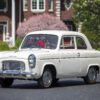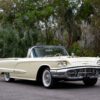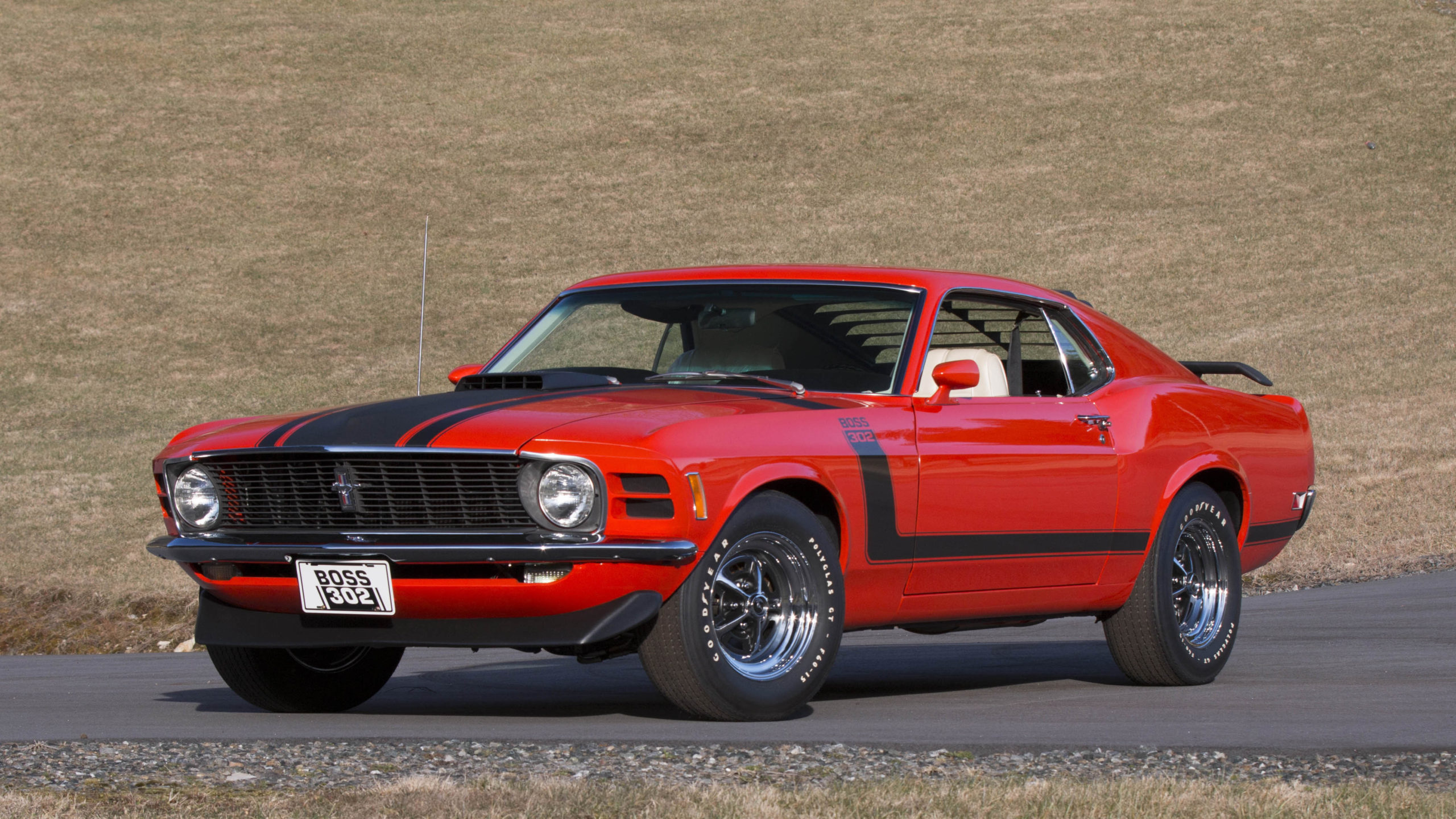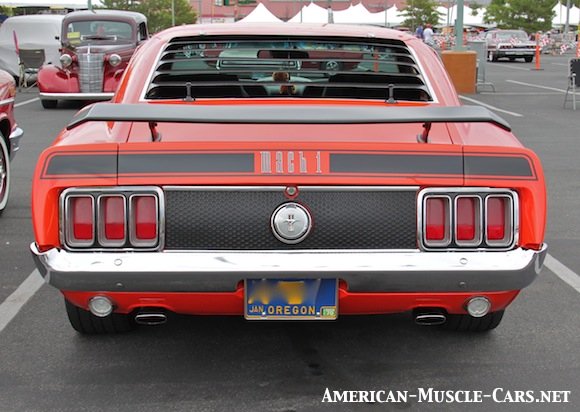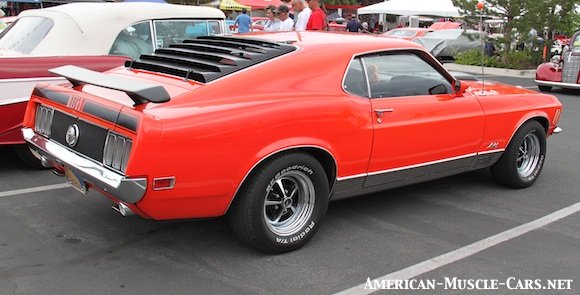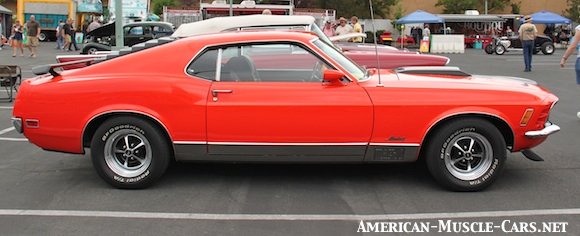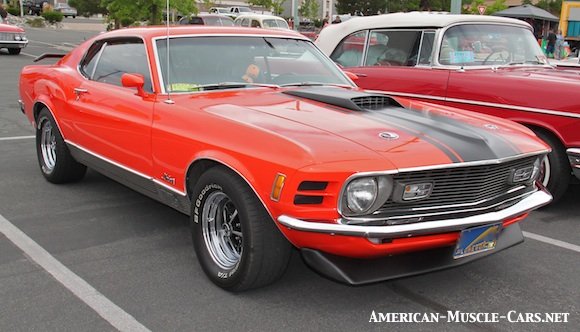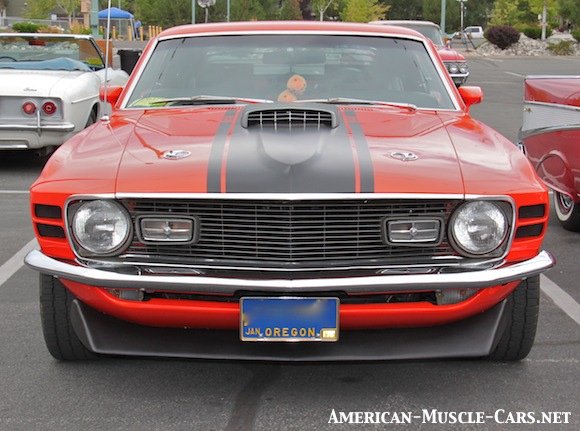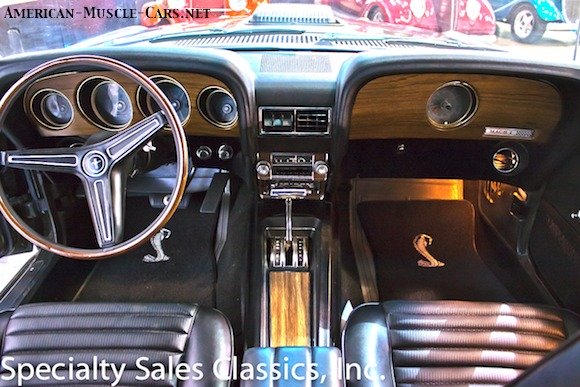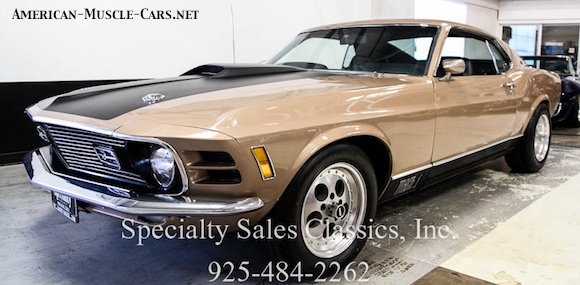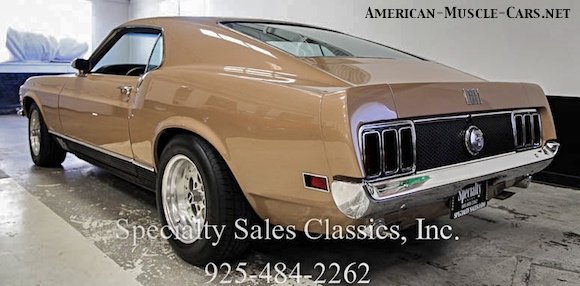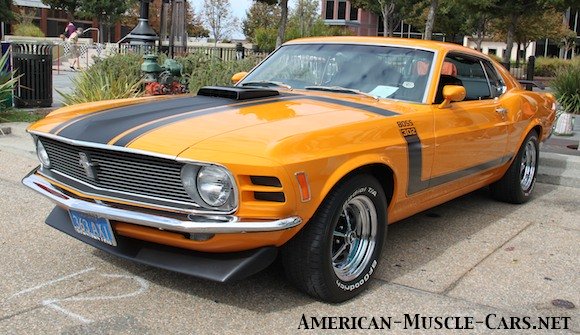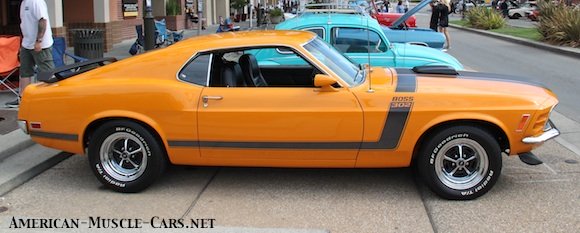1970 Ford Mustang
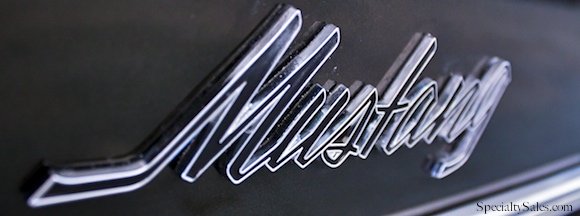
A TOUGH MARKET FOR THE 1970 FORD MUSTANG
Ford had broadened the Mustang lineup in a big way for the 1969 model year. There was the basic Mustang in 3 body styles, Sport Roof (Fastback), Convertible and Hardtop. Then there was the Mach 1, one last year of GT in limited numbers, the luxury-minded Grande, then the real hot rods, the Boss 302, Boss 429 and the 428 Cobra Jet. Despite all that, sales were down from the previous year, which were down from the year before that. Clearly the competition had caught up to the runaway Ford Mustang. The days of being the only Pony Car on the market were clearly behind us now. GM had launched the Chevrolet Camaro and Pontiac Firebird platform-mates with great commercial success, and was already moving into its second generation. And finally Chrysler was joining the party with two platform-mates of their own that would become perhaps the ultimate Pony Cars, the Dodge Challenger and Plymouth Barracuda. Then there were the legions of muscle cars that had sprung up since the Mustang first appeared in 1964. The Chevy Chevelle SS, Pontiac GTO, Dodge Charger, Plymouth Roadrunner were all eating into the Mustang’s market share. Yet, the Mustang still managed to outsell every other Pony Car on the market.

1970 Ford Mustang SPORT ROOF
The most obvious styling difference between the 1969 and the 1970 was the front grille. Where the ’69 had 2 headlights outboard of its grille, and 2 more tucked inside, the 1970 model had only 2 headlights total. They were located inside the grille opening, which was wider than before, then outboard of the grille were 2 slots, or vents at the front corners of the fenders. It created a cleaner, meaner look. The Mach 1s also got rectangular fog lights in the grille. Out back, the taillights now resided on a flat panel where the ’68 had a concave panel. The faux side scoops were eliminated on the Sport Roofs, and the Convertibles and Hardtop lost those busy-looking imitation vents. All of these things served to clean up the lines of an already elegant shape.
BELOW: This well-optioned 1970 Mach 1 has the optional rear wing, rear window louvers known as “Sports Slats”, the Shaker Hood Scoop and chromed Magnum 500 wheels.
1970 FORD MUSTANG OPTIONS
As always, options were the name of the game, and they continued to expand in every direction. It was now possible to order rear window slats and a rear wing on any Sport Roof, even if had a 6 cylinder. And any Mustang with at least a 351 2-barrel could now get the Shaker Hood Scoop.
1970 FORD MUSTANG MECHANICAL CHANGES
There were some important mechanical changes that took place for the 1970 model year. Those cars equipped with dual exhaust now came with a more conventional system with one muffler for each side, replacing the single traverse mounted muffler system used on Mustangs until that point. A rear stabilizer bar was added to the Competition Suspension Package, 1/2-inch on 351-equipped cars and 5/8s for 428s.

ABOVE is the optional chromed Magnum 500 wheel, and BELOW is the Argent (dull silver) Styled Steel Wheel with chromed trim ring and center cap.
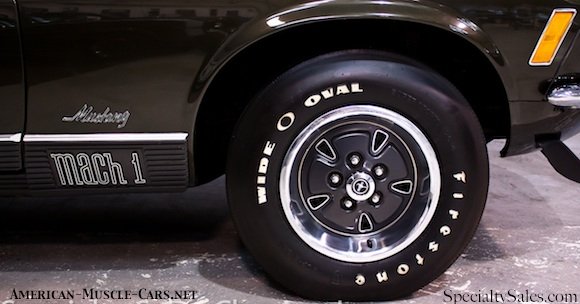
1970 Ford Mustang INTERIORS
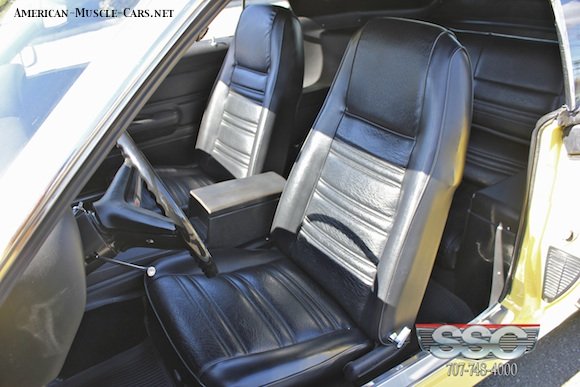
ABOVE are the seats from the Standard Interior. BELOW is the Deluxe Interior.

1970 FORD MUSTANG INTERIORS
The interior mostly carried over from the 1969 Mustang, but now the high-back bucket seats became standard equipment. Only one interior option package was offer for 1970, the Decor Group, which included simulated wood appliques on the dash and door panels, a deluxe steering wheel, dual color-keyed racing mirrors, color-keyed rocker panels and wheelwell moldings. The ignition was relocated to the steering column in a Federally-mandated move to curb car theft. The seatbelts were also changed.

ABOVE is the way the door panels were finished with the Standard Interior. BELOW is the Deluxe.
ABOVE shows the imitation woodgrain appliques on the dash and console with the Deluxe Interior. BELOW shows Standard Interior. It also shows the optional gauge package with tachometer.
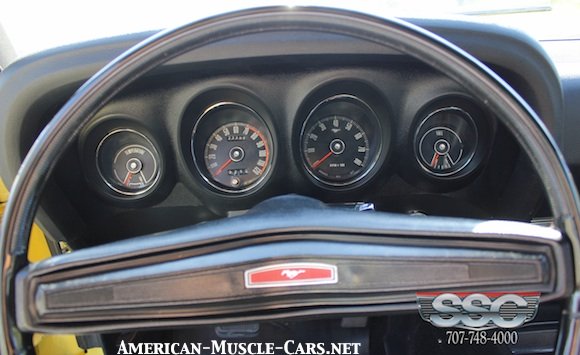
1970 Ford Mustang ENGINES
Please visit our FORD ENGINES-section
1970 FORD MUSTANG ENGINE CHOICES
The engine lineup was pretty much the same as in 1969 with a few notable exceptions. First off, the 390 was dropped. More important a new 351 V8 was added, this one built in Cleveland and vastly different than the 351W V8 built in Windsor, Ontario, Canada. The base engine was still a 6 cylinder, there was a 302 2-barrel, a couple of 351Ws, a 351C, the Boss 302, Boss 429 and 3 versions of the 428 Cobra Jet. Quite a feat, considering cars today may have 2 engine choices or perhaps 3.
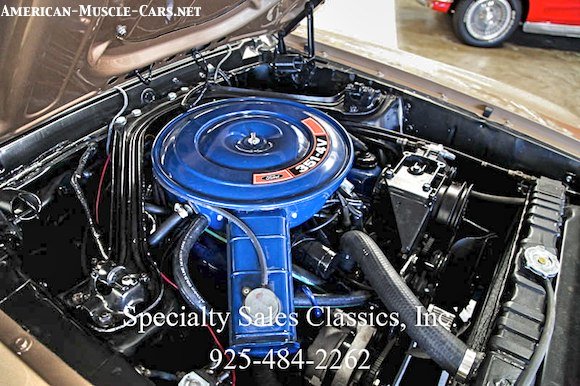
ABOVE is the 351W without Ram Air. BELOW is the same engine with Ram Air.
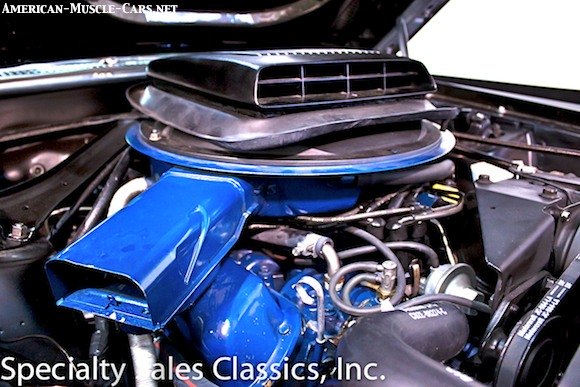
1970 FORD MUSTANG 351C
The 351C was so called because it was built in Ford’s Cleveland, Ohio engine plant, as opposed to the 351W which was built in Ford’s Windsor Engine Plant in Ontario, Canada. While the 351C shared the same bore and stroke as the 351W, it really was a completely different engine. The cylinder heads were unique and one of the best-flowing OHV heads in production at the time. There were actually two different sets of heads designed for the 351C, a 2V head, made for use with 2-barrel carburetors in low-performance applications, and the 4V head for 4-barrel, high-performance applications. The 2V heads had an open combustion chamber design with low compression, meant for low-emissions. It had smaller ports and valves (2.04” intakes, 1.65” exhausts). The 4V heads had much larger intake and exhaust ports and larger valves (2.19” intake, 1.71” exhaust), and closed- or quench-type combustion chambers. They were very similar to the Boss 302’s heads. All the 351Cs that were used in the 1970 Mustang that came with 4V heads also had 4-bolt main bearing caps. The 2V engines had 9.0:1 compression, a 350cfm 2-barrel carb and made 250hp at 4,600rpm. The 4V engines had 11:1 compression, a 470cfm 4-barrel and made 300hp at 5,400rpm.
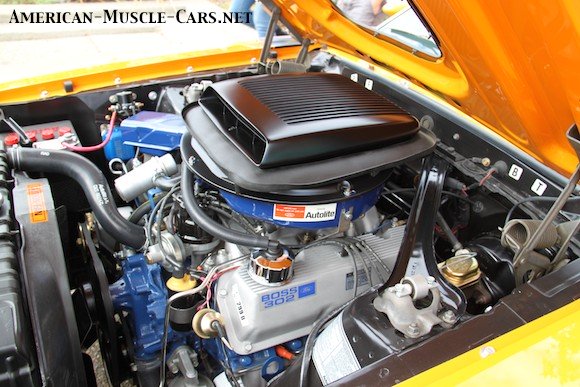
1970 FORD MUSTANG BOSS 302 ENGINE
The Boss 302 engine was known to be “peaky”, meaning it didn’t produce big power until very high rpms, making it fast, but very hard to drive. Some effort was made in 1970 to solve this. Smaller intake valves were fitted, reduced from 2.23 inches to 2.19 inches. Even this seems way too big for an engine of this size. The DZ302 in the Camaro Z28 only had 2.02-inch intake valves, and it too was peaky. Even Chevy’s mighty 454 cubic inch big block only had a 2.19-inch intake valve, the same size as this 302 cubic inch Ford engine was downsizing to. It was still peaky, making most of its power above 6500 rpm. Ford decided to drop the expensive cross-drilled crankshaft in favor of a cheaper non-drilled unit, finding that it made no difference in street use. Visually, the chromed pressed-steel valve covers were replaced by finned cast-aluminum valve covers.
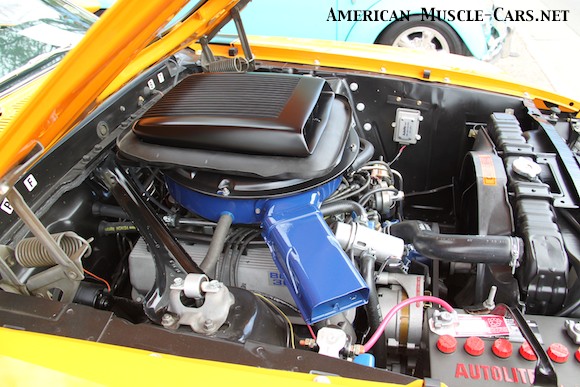
1970 Ford Mustang MACH 1
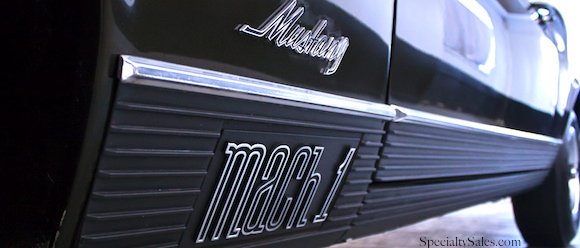
1970 FORD MUSTANG MACH 1
The Mustang GT disappeared finally, and would not reemerge until 1983. The Mach 1 had truly taken its place in the Mustang model lineup. Not the fastest Mustang, but fast enough, and with all the style any boy-racer could want. Appearance-wise the 1970 Mach 1 got a full-length ribbed aluminum rocker panel with embossed “MACH 1” lettering in front. The blacked-out hood went away, replaced by a broad racing stripe down the middle of the hood, and with the engine size call-outs on the sides of the scoop. They came stock with a non-functional hood scoop but could be optioned up to the Shaker Hood Scoop on cars with a 351 or larger. The optional hood hold-down pins were replaced by flush, chromed twist-locks. With the new 2-headlight front end, the Mach 1 got rectangular Sportlamps in the grille. The now-flat taillight panel got a 3-D honeycombed panel surface. The standard wheels were widened to 7 inches. The Mach 1 package continued to include simulated woodgrain appliques on the dash, doors and console.
ABOVE is a Mach 1 with the front spoiler, and optional rear wing. Below is the same year Mach 1 without the front spoiler and without the rear wing.
1970 Ford Mustang BOSS 302

1970 FORD MUSTANG BOSS 302
In addition to all the changes that differentiated any 1970 from a 1969 Mustang, the Boss 302 got some solid improvements along with normal year-to-year changes. They now had body-colored racing mirrors and front spoiler, but since the cars were delivered new to the dealers without the spoilers installed, some never got put installed. The exterior color palette expanded with the addition of the bright “Grabber” colors. The rear deck and taillight panel remained blacked out. The C-stripes of the 1969 Boss 302 were replaced by a bold new stripe set that crossed the hood just in front of the cowl, ran down the fenders diagonally, with “BOSS 302” lettering, then headed straight back, along the doors to the rear quarters, in sort of a “hockey stick”-shape. The wheels and tires were upgraded to 15X7. The rear wing, Sports Slats and Shaker Hood Scoop were all optional on the Boss 302, and some even had hood-mounted tachometers. Most came with standard interior but a few were built with the Decor Group. There was a new 1/2-inch rear stabilizer bar, a Hurst shifter, and the new dual exhaust system using one muffler for each side instead one traverse muffler serving both sides.
1970 FORD MUSTANG BOSS 302 ENGINE
The Boss 302 engine was known to be “peaky”, meaning it didn’t produce big power until very high rpms, making it fast, but very hard to drive. Some effort was made in 1970 to solve this. Smaller intake valves were fitted, reduced from 2.23 inches to 2.19 inches. Even this seems way too big for an engine of this size. The DZ302 in the Camaro Z28 only had 2.02-inch intake valves, and it too was peaky. Even Chevy’s mighty 454 cubic inch big block only had a 2.19-inch intake valve, the same size as this 302 cubic inch Ford engine was downsizing to. It was still peaky, making most of its power above 6500 rpm. Ford decided to drop the expensive cross-drilled crankshaft in favor of a cheaper non-drilled unit, finding that it made no difference in street use. Visually, the chromed pressed-steel valve covers were replaced by finned cast-aluminum valve covers.

This Boss 302 has the optional Shaker Hood Scoop.
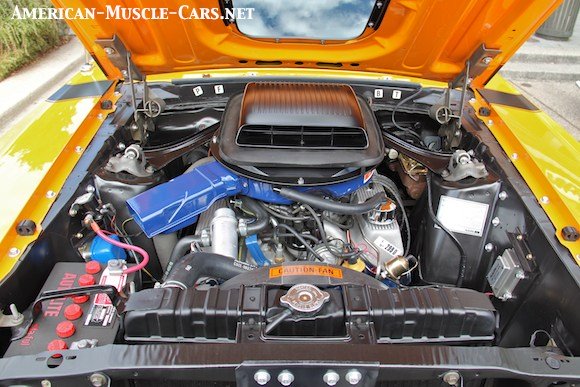
THE END OF THE BOSS 302
The Boss 302 came into existence to compete in the SCCA (Sports Car Club of America) Trans Am Racing Series that required production cars (with at least 500 sales to the public) and engines no larger than 5.0 liters. Chevy built the ’69 Camaro Z28 with it’s DZ302 (302 cubic inches equals 5 liters) just for this reason. Ford responded with the ’69 Boss 302. But by 1971, SCCA had changed the rules, raising the displacement limit to 5.7 liters (350 cubic inches). So, the reason for the expensive, low-production Boss 302 engine just went away. With the next body change in 1971, the new Boss would have a 351C and be called Boss 351.
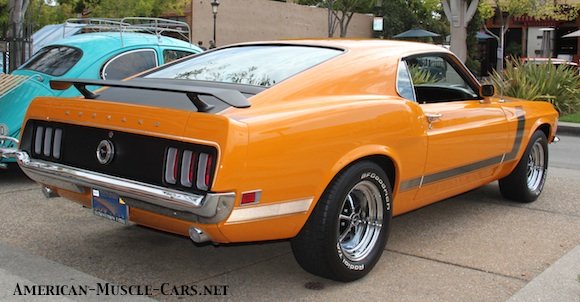
1970 Ford Mustang BOSS 429
1970 FORD MUSTANG BOSS 429
The 1970 Boss 429 was essentially the same as the 1969 Boss 429, receiving the normal series changes for all Mustangs, some model-specific visual changes and a few mechanical upgrades. The expensive, hand-built car was only built from January to December 1969, including both model years, with only a short break during summer to change over. Only 499 Boss 429s were built for the 1970 model year. Visual changes included a black hood scoop (not body-colored as before), a new center cap on the chromed 15X7” Magnum 500 rims, and the addition of the “Grabber” series of colors. Most used the T-series engine, but a few used A-code engines (altered for emissions purposes). All used the same solid-lifter camshaft as the 428SCJ, which supposedly raised output by 30hp at 6,000. The rating remained unchanged at 375hp. A 5/8-inch sway bar was added to the back.
1970 FORD MUSTANG BOSS 429 A RARE BIRD INDEED
As of 1995, and according to the Boss 429 Registry, a total of 451 1969 Boss 429s and 253 1970s have been located. Ford also built two Boss 429-powered Mercury Cougars as concepts, as well as a special edition called the “Quarter Horse”. This was a Sport Roof Boss 429 with a Shelby front end treatment. Neither were ever produced.
1970 Ford Mustang 429 COBRA JET
1970 FORD MUSTANG 428CJ
The top engine for the Mustang line continued to be the 428 Cobra Jet V8 or 428CJ, and it remained unchanged from 1969. And why change it? As it was, it was probably the fastest production car in the quarter mile that you could buy. Based on the FE family of big block Ford V8s, it shared its basic architecture with the 390 and the 427. One change for 1970 however was the option available with 428CJs only called the Drag Pack, which included 3.91:1 axle ratio (4.30:1 optional), engine oil cooler, and beefed-up connecting rods. All 4-speed cars also got a Hurst floor shifter with aluminum T-handle. With this package it became the 428CJ-R.
1970 Ford Mustang PRODUCTION NUMBERS
| 1970 FORD MUSTANG
2-door Fastback 2-door Fastback Deluxe 2-door Hardtop 2-door Hardtop Deluxe Convertible Convertible Deluxe Mach 1, Fastback only Grande, Hardtop only |
CODE
63A 63B 65A 65B 76A 76B 63C 65E |
QUANTITY PRODUCED
39,470 77,161 6,199 6,464 5,408 1,474 40,970 13,581 Total 190,727 |
PRICE WHEN NEW |
A WORD ABOUT MUSTANG PRODUCTION IN A DECLINING MARKET
No one knew it yet, but the Muscle Car Era peaked in 1970 and was over by 1973. High gas prices, increasing safety and emissions regs were forcing cars to get slower and uglier. The emphasis was now being put on “Personal Luxury Cars” like the Monte Carlo, Grand Prix and Thunderbird. All the while, the GM and Mopar had been busily building cars to eat into Mustang’s market share, and it worked. Mustang sales declined steadily since the first year. Part of it must have been due to having already sold everyone a Mustang, part of it was lost to the competition, and some was just the changing of the times and the aging of the ‘youth market’ that drove sales. Here is a quick rundown of total Mustang Production through the years:
| 1965 early & late
1966 1967 1968 1969 1970 |
680,989
607,568 472,121 317,404 299,824 190,727 |
1970 Ford Mustang SPECIFICATIONS
| BODY STYLE
Wheelbase Length Width Height Track, front Track, rear Weight ENGINE OPTIONS 302ci V8 w/1X2bbl 351ci V8 w/1X2bbl 351ci V8 w/1X4bbl 428ci CJ V8 w/1X4bbl |
HARDTOP
108.0 in / 2743 mm 187.4 in / 4760 mm 71.3 in / 1811 mm 51.3 in / 1303 mm 58.5 in / 1486 mm 58.5 in / 1486 mm 3,190 lbs / 1447 kg 220 hp @ 4600 rpm 250 hp @ 4600 rpm 300 hp @ 5400 rpm 335 hp @ 5500 rpm |
SPORTROOF
108.0 in / 2743 mm 187.4 in / 4760 mm 71.3 in / 1811 mm 51.3 in / 1303 mm 58.5 in / 1486 mm 58.5 in / 1486 mm 3,190 lbs / 1447 kg 300 lb/ft @ 2600 rpm 355 lb/ft @ 2600 rpm 380 lb/ft @ 3400 rpm 440 lb/ft @ 3400 rpm |
CONVERTIBLE
108.0 in / 2743 mm 187.4 in / 4760 mm 71.3 in / 1811 mm 51.3 in / 1303 mm 58.5 in / 1486 mm 58.5 in / 1486 mm 3,190 lbs / 1447 kg |


